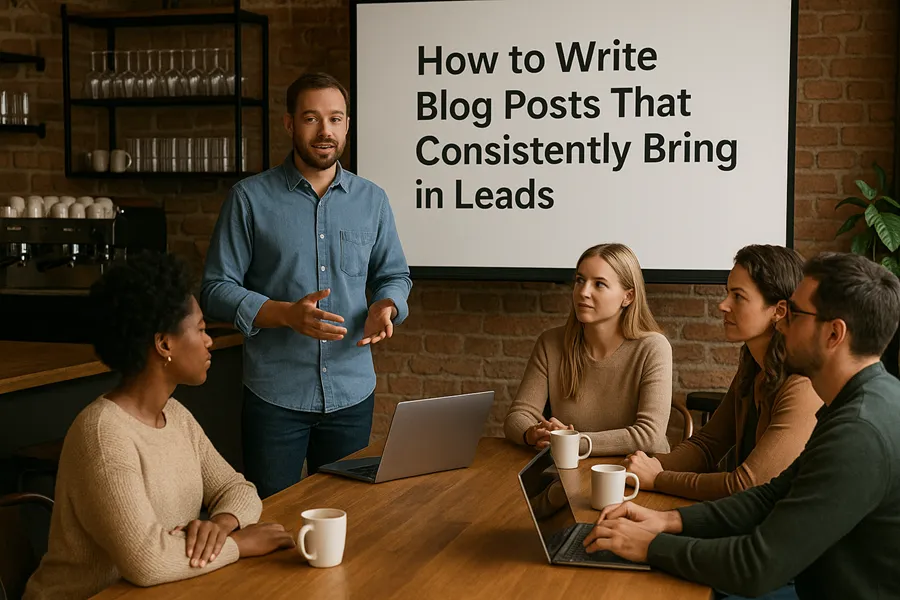
5 Practical Ways Small Businesses Can Repurpose One Piece of Content
For small businesses, content marketing is not just about sharing insights — it’s about generating tangible results. The most successful blogs go beyond simply informing readers; they drive lead generation by strategically guiding visitors through the buyer journey. But what makes a blog post a consistent lead magnet? Let’s explore how to craft blog content that attracts the right audience and converts them into qualified leads.
Start with a Clear Understanding of Your Target Audience
Lead-generating blog posts begin with understanding exactly who you're writing for. Without this clarity, even the best-written content may miss the mark. Define your ideal customer persona: their pain points, goals, and what type of content they’re searching for.
Use tools like Google Analytics, customer surveys, and keyword research to understand search intent. Then craft blog topics that directly address their needs, such as “how-to” guides, problem-solving articles, and comparison posts.
Choose Lead-Focused Topics That Align with Your Offers
Every blog post should serve a strategic purpose. Choose topics that naturally lead into your product or service offerings. For instance, if you sell accounting software, a post titled “5 Mistakes Small Businesses Make During Tax Season” aligns perfectly and gives you a lead-in to promote your solution.
This alignment ensures your content not only attracts visitors but also draws in the right kind of traffic — prospects who are likely to convert.

Include a Compelling Call to Action (CTA)
A blog without a CTA is a missed opportunity. Each post should clearly tell readers what to do next — whether it’s downloading a free resource, booking a consultation, or signing up for your email list.
CTAs should be:
● Highly relevant to the content
● Placed naturally throughout the post
● Clear, action-oriented, and benefit-focused
For example: “Download our free SEO checklist to start ranking today” is more enticing than a generic “Click here.”

Offer Gated Content to Capture Leads
To turn blog readers into leads, offer something of value in exchange for their contact information. This could be:
● eBooks or guides
● Checklists or templates
● Exclusive video tutorials
● Case studies or reports
Gated content should directly complement the blog topic. If your blog post is about content marketing strategy, offer a downloadable content calendar template.
Optimize Posts for SEO and Discoverability
Even the best blog won’t generate leads if no one can find it. Search engine optimization (SEO) ensures your content ranks well in search results, driving steady, organic traffic.
Key SEO practices include:
● Incorporating relevant keywords in titles, headers, and throughout the content
● Optimizing meta descriptions and images
● Using internal links to direct readers to related content
● Ensuring your site is fast and mobile-friendly
Use tools like SEMrush, Ubersuggest, or Yoast SEO to optimize your posts before publishing.

Leverage Lead Magnets with Exit-Intent Popups
Exit-intent popups — those that appear when a user is about to leave your site — are a proven tactic for capturing leads. Offer a lead magnet like a discount code, free trial, or downloadable guide. These popups catch users right before they bounce, giving them a final chance to engage.
Just ensure the popup is not intrusive and adds real value.
Promote and Reshare Posts Strategically
To maintain a steady flow of leads, your blog content needs ongoing exposure. Share posts across social media platforms, email newsletters, and partner networks. Repurpose high-performing posts into videos, infographics, or LinkedIn articles to expand their reach.
Consistent promotion not only increases visibility but also establishes your authority and keeps your blog top-of-mind with potential leads.
Final Thoughts
Writing blog posts that generate leads is a strategic process — one that combines valuable content with smart SEO, compelling CTAs, and thoughtful promotion. When done right, your blog becomes more than a marketing tool; it becomes a lead-generation engine that works 24/7 for your business. Focus on audience needs, align your content with your offers, and keep testing what converts best.
